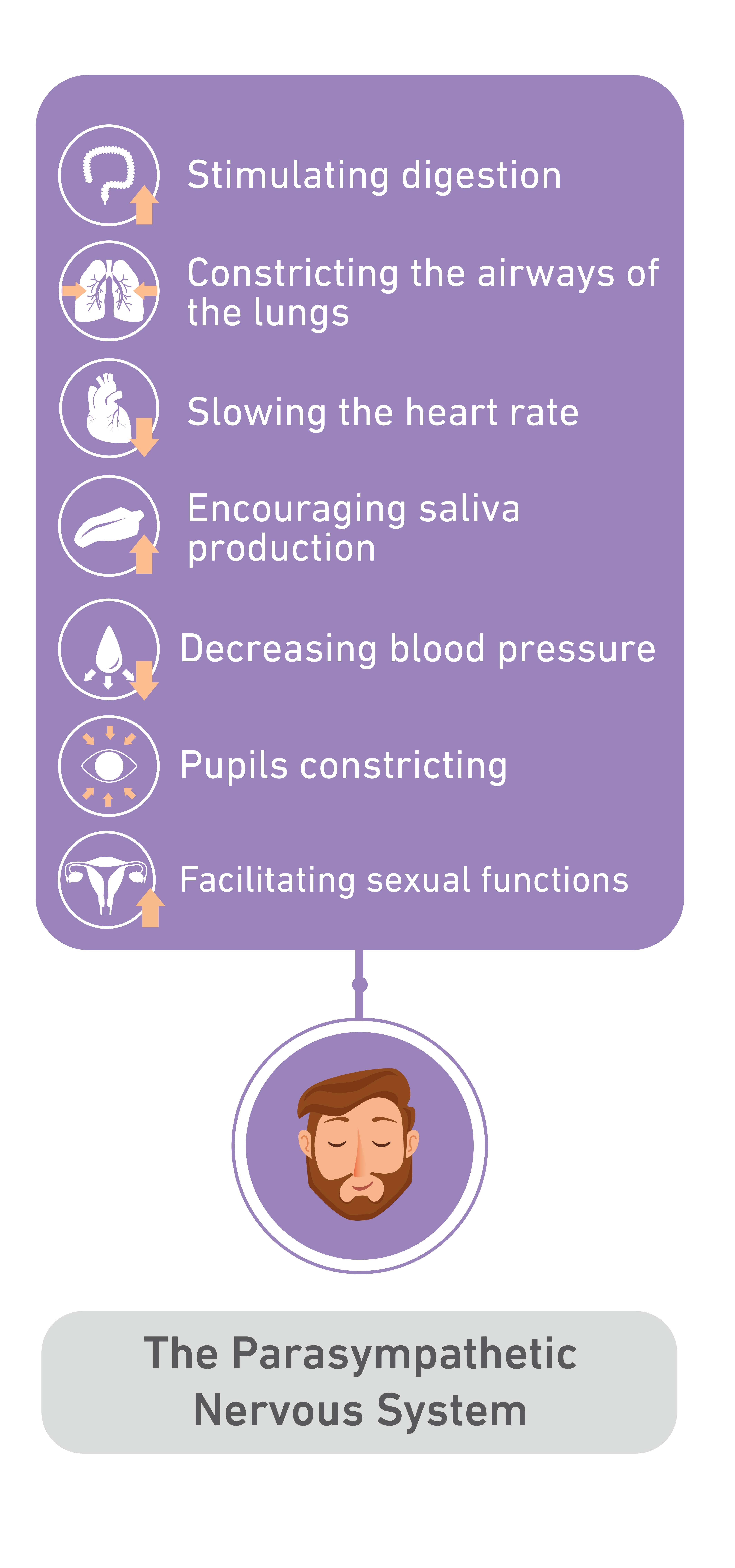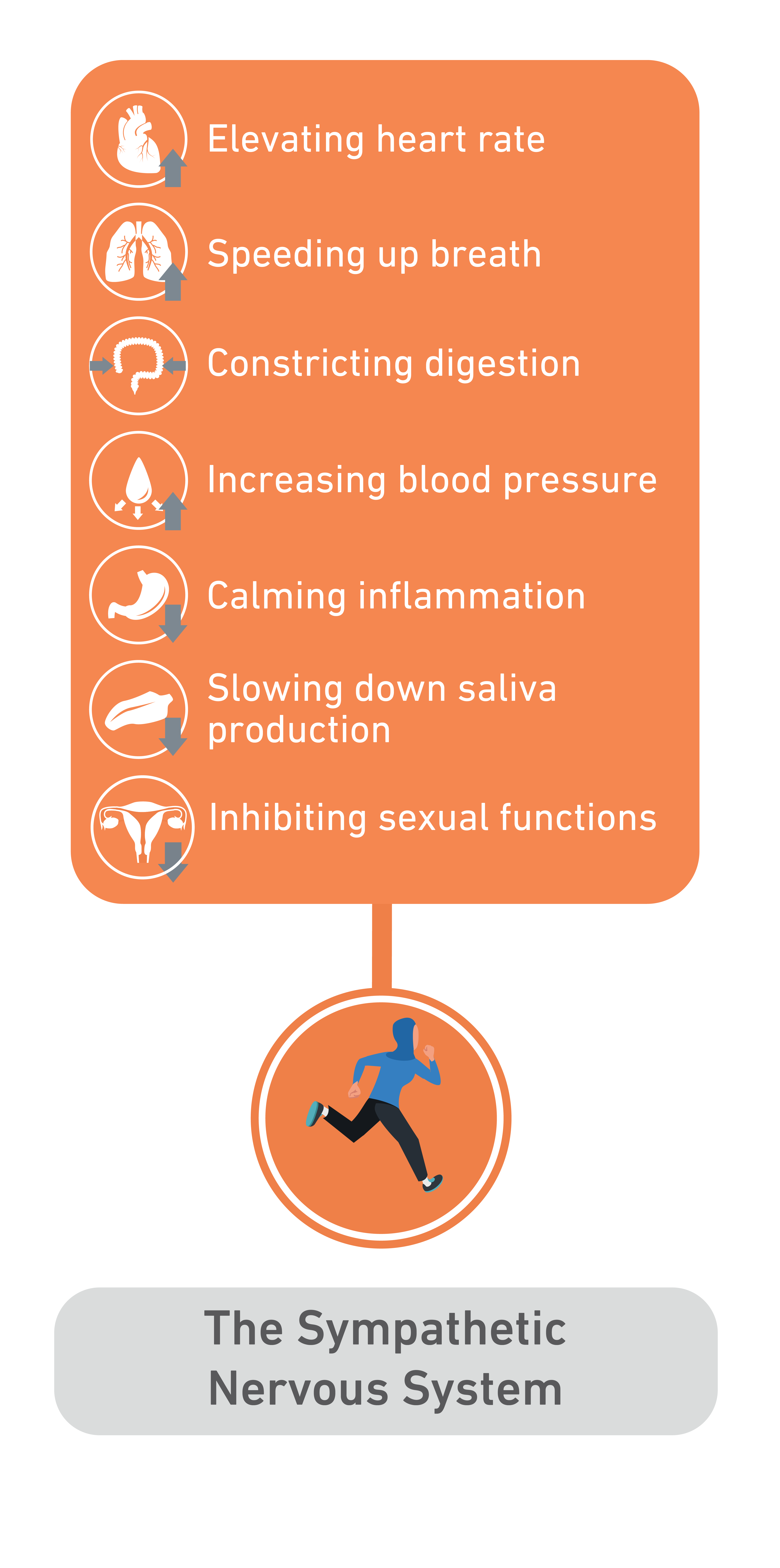
Lesson objective:
In this lesson, we learn about the sympathetic and parasympathetic nervous systems and the functions associated with each of them. In addition, we cover the roles of those systems in responding to stress factors, including physical changes to bodily functions.
We were talking previously about the autonomic nervous system, and its two “sides.”
Despite differing roles, the sympathetic and parasympathetic nervous systems are connected to the same organs and areas of the body.
Through the sympathetic and parasympathetic nervous systems, the brain can signal different responses to the lungs, heart, gut, or immune systems depending on which pathway it uses.
Both pathways are needed, and it is important that each one turns up and down in cycles, in a close dance with each other.
You can think about the sympathetic and parasympathetic nervous systems as the accelerator and brakes in a car. 

The accelerator and the brakes are both connected to multiple parts of the car. In fact, both the accelerator and the brakes must be connected to some of the same parts, since the outcome of one counteracts the outcome of the other.
The accelerator speeds the car up, while the brake slows it down. Each has a contrasting function to the other.
You cannot drive a car with only an accelerator. You would crash.
Likewise, you cannot drive a car that only has brakes. You would not move or go anywhere. Both functions are necessary in order to safely get to your destination.
In the same way, we need both the sympathetic and the parasympathetic nervous systems in order to survive. We use them for different purposes, often one after the other in a cyclical fashion.
Alternating activation of the sympathetic and parasympathetic nervous systems is critical for healthy functioning.
Let’s start with the sympathetic nervous system. The sympathetic nervous system speeds things up, elevating heart rate, speeding up breath, constricting digestion, increasing blood pressure, working to calm inflammation, and slowing down saliva production. It is the accelerator.
The sympathetic nervous system is also linked to activation of the HPA axis, and prepares the body to confront stress. It prepares the body to confront the stress and fight it, or to literally flee from the stress by running, escaping, or moving quickly away. In short, it prepares us for acute confrontation with the stress of any type, whether it be physical, emotional, or mental.
In contrast, the parasympathetic nervous system slows things down, stimulating digestion, constricting the airways of the lungs, encouraging saliva production, and slowing the heart rate. It is the brakes.
The functions associated with the parasympathetic nervous system are part of a “resting and digesting” process that is associated with resting state, moments of relaxation, and calm.
It alternates with the often rapid and automatic sympathetic system responses, ensuring a balance between healthy resting and digesting, and healthy preparation to confront stressors.
Unfortunately, stressful and traumatic experiences have a particular tendency to disrupt the healthy alternation between the sympathetic and parasympathetic systems, and we’ll get to that in a moment.